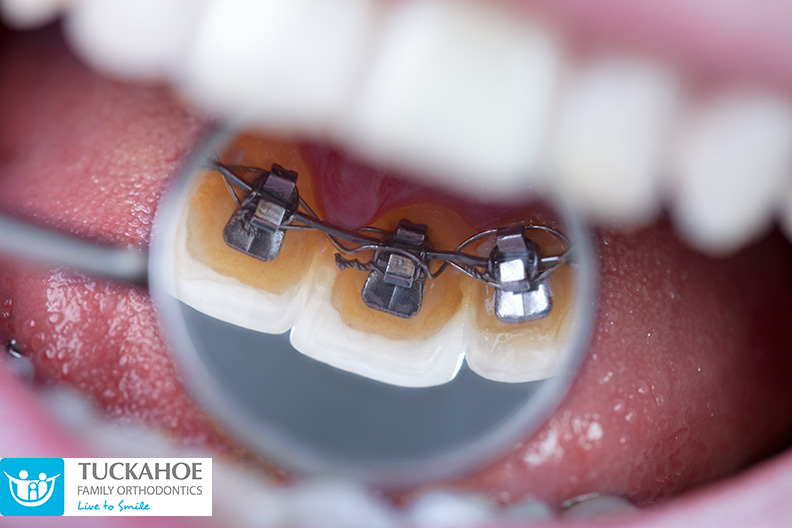Tuckahoe, NY – Lingual braces offer patients a way to straighten their teeth, but without anyone knowing they are doing it. The braces are placed on the lingual, or tongue side, of the teeth, hiding them from view. Dr. Sam Polan, of Tuckahoe Family Orthodontics, explains everything you need to know about lingual braces.
What exactly are lingual braces?
Lingual braces look just like standard metal braces, only they are placed along the tongue side of the teeth, which hides them from view and makes them nearly invisible. Just like standard braces, they consist of metal brackets and wires that are used to move the teeth with gentle pressure over time.
What are the steps to getting lingual braces?
First, your orthodontist will need an accurate impression or scan of your teeth. These will be sent to a lab to fabricate your braces to ensure they are made to perfectly fit your teeth, and designed with the desired final outcome in mind.
On the application day, placement is fairly easy, and involves using a special adhesive to stick the braces to the teeth. Once the braces are on, the wires will be placed, and your teeth will start gradually being guided to their new position.
What are the advantages to lingual braces?
The primary advantage of lingual braces as that they are much more discrete than regular braces because they are so much harder to see. Unless they are looking closely inside your mouth, no one will be able to see the brackets and wires on the backs of your teeth. Unlike clear aligners (Invisalign), lingual braces do not have to be removed for eating, which may be desirable to some patients.
What are the disadvantages to lingual braces?
The biggest disadvantage for many patients is that lingual braces are harder to get used to, and are generally more uncomfortable than standard braces or clear aligners. In the beginning, speech will be affected and it can take some time for you to speak normally. You may notice a slight lisp in your speech that wasn’t present before.
You’ll also notice that your tongue will be sore in the beginning. There may be redness and sores as your tongue gets used to the brackets and wires occupying the same space it does. This can happen for the first several weeks as you get used to the feeling. Warm salt water rinses can relieve soreness, and orthodontic wax can also be used in the areas that present the most trouble.
Just as with traditional metal braces, you will have to avoid certain foods to prevent damaging the brackets and wires. Avoid anything too hard, sticky, chewy or crunchy, as these things can break the brackets and can be difficult to clean.
How do I care for my teeth with lingual braces?
Lingual braces can be harder to keep clean, simply because of their location. You won’t be able to physically see if food or debris that has become stuck, so you’ll have to take extra time when brushing. Many patients find that a toothbrush with a smaller head is easier to navigate with the braces, and an electric toothbrush can be helpful. Patients should clean their teeth after every meal and snack.
How long will lingual braces treatment take?
As with other orthodontic treatment, every case is individual. Average time spent in lingual braces is between 18 and 30 months, however, exact treatment time is dependent on the severity of the case, as well as how well your teeth respond to treatment.
How much do lingual braces cost?
Lingual braces are more expensive than traditional metal braces, and generally cost more than clear aligners as well. Exact costs will vary by location, and from office to office.
Who is an ideal candidate for lingual braces?
Lingual braces can be a great option for those looking for a way to more discretely straighten their teeth, but some patients with certain bites or malocclusions may not be ideal candidates for lingual braces. The best way to determine if lingual braces are right for you is to have a consultation with a certified orthodontist to review the best options for your treatment.


No Comments